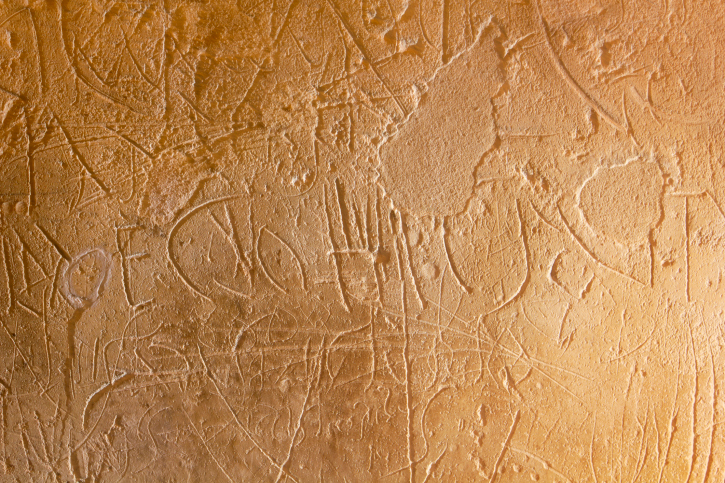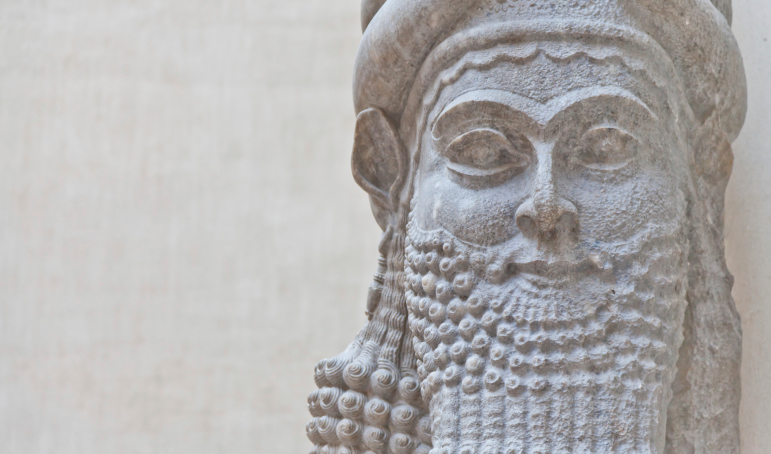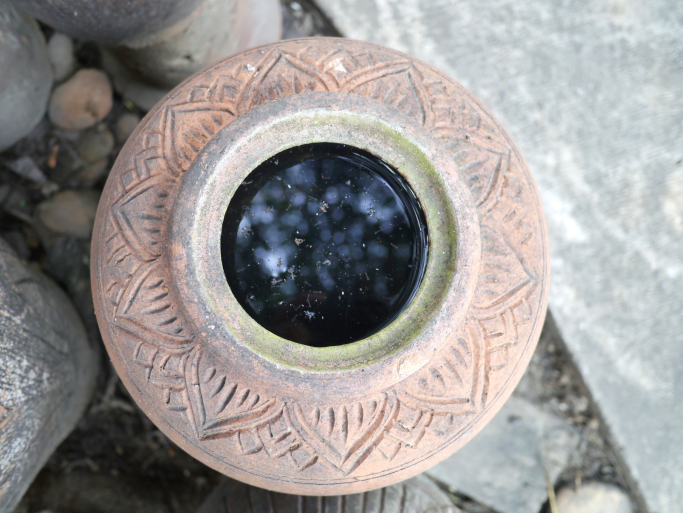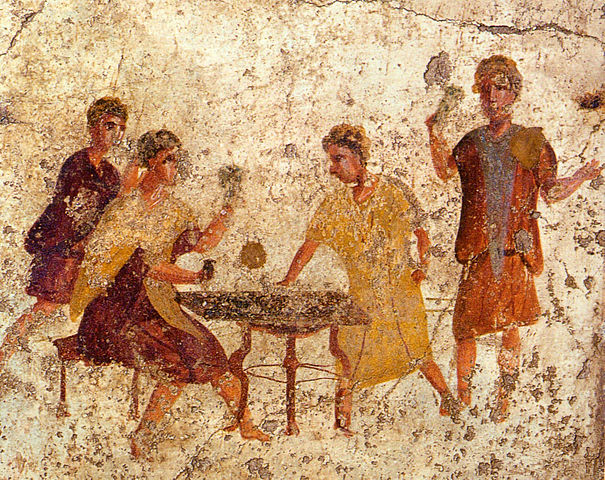 Our World
Our World  Our World
Our World  Movies and TV
Movies and TV The 10 Coolest Stars to Set Sail on The Love Boat
 History
History 10 Things You Didn’t Know About the American National Anthem
 Technology
Technology Top 10 Everyday Tech Buzzwords That Hide a Darker Past
 Humans
Humans 10 Everyday Human Behaviors That Are Actually Survival Instincts
 Animals
Animals 10 Animals That Humiliated and Harmed Historical Leaders
 History
History 10 Most Influential Protests in Modern History
 Creepy
Creepy 10 More Representations of Death from Myth, Legend, and Folktale
 Technology
Technology 10 Scientific Breakthroughs of 2025 That’ll Change Everything
 Our World
Our World 10 Ways Icelandic Culture Makes Other Countries Look Boring
 Our World
Our World 10 Ways Your Christmas Tree Is More Lit Than You Think
 Movies and TV
Movies and TV The 10 Coolest Stars to Set Sail on The Love Boat
 History
History 10 Things You Didn’t Know About the American National Anthem
Who's Behind Listverse?

Jamie Frater
Head Editor
Jamie founded Listverse due to an insatiable desire to share fascinating, obscure, and bizarre facts. He has been a guest speaker on numerous national radio and television stations and is a five time published author.
More About Us Technology
Technology Top 10 Everyday Tech Buzzwords That Hide a Darker Past
 Humans
Humans 10 Everyday Human Behaviors That Are Actually Survival Instincts
 Animals
Animals 10 Animals That Humiliated and Harmed Historical Leaders
 History
History 10 Most Influential Protests in Modern History
 Creepy
Creepy 10 More Representations of Death from Myth, Legend, and Folktale
 Technology
Technology 10 Scientific Breakthroughs of 2025 That’ll Change Everything
 Our World
Our World 10 Ways Icelandic Culture Makes Other Countries Look Boring
10 Surprising Ways We’re Exactly Like Our Ancestors
The history books were written by the learned and educated men of their time. So when we’re studying ancient cultures, it’s easy to get the idea that society was much more dignified and serious then. But when you look at what’s been left behind by the masses, you get a somewhat surprising picture of just what sex-obsessed, trash-talking, immature people our ancestors really were—and how much they were just like us.
10Trash Talking

Today we trash talk when we play video games or sports—so much so that there are often rules to govern what’s considered sportsmanlike conduct. And as it turns out, the ancients did exactly the same thing. Historians have recently started studying ancient graffiti as a way to look into the world of everyday people, and they’ve found that not only were they cheerfully foul-mouthed, they also shared their opinions with less regard for other people’s feelings than the average YouTube commenter.
When Sydromachos walked past a certain wall in Athens 1,500 years ago, he would have seen it written large and clear that someone thought he had a backside “as big as a cistern.” Thoughts on a poor soul named Epaphra are clearly scrawled on the walls of Pompeii’s basilica, including, “Epaphra, you are bald!” and “Epaphra is not good at ball games.” And written on the wall of a house in Pompeii is quite the burn: “Postpone your tiresome quarrels if you can, or leave and take them home with you.” If that’s what they left scrawled on the walls, we can only image what they said to each others’ faces
9Teenage Graffiti

The current image of a graffiti artist is usually a teenage boy with a can of spray paint in one hand and a skateboard in the other. Well it turns out that kid is part of a cultural tradition 35,000 years in the making. When art historians and anthropologists began taking a closer look at prehistoric cave paintings, they noticed something strange. Many of the paintings were what they expected, scenes presumably done by adult tribal shaman-artists. But they also found other drawings, ones that would be familiar to anyone who’s ever walked through a graffiti-defaced abandoned building. There were plenty of disembodied, exaggerated body parts and anatomically incorrect naked women, as well as excessively gory hunting scenes. Based on an examination of the hand and finger proportions found in the less-than-professional paintings, researchers discovered that the vast majority of cave art studied—about 80 percent—had been done by teenage boys. Teenage boys who were obviously preoccupied with two topics—hunting and sex.
8We Value Our Most Mundane Thoughts

We all have that friend, the one who posts everything they had for lunch on Facebook and makes sure the world knows when they’re going to sleep. We might think that this is a recent development, a side effect of technology that allows us to document every aspect of our lives, but it’s really nothing new at all. Preserved graffiti from Pompeii records the type of information that people thought important enough to broadcast to the world. In a gladiator barracks: “On April 19th, I made bread.” On another door: “On April 20th, I have a cloak to be washed.” On the exterior of a house: “Apollinaris, the doctor of the emperor Titus, defecated well here.” And they weren’t the only ones to feel the need to record their most mundane activities. Many of the ancient Viking runes that decorate the chamber tomb of Maeshowe, Scotland, simply proclaim that so-and-so etched these runes, or made this cross.
7Jokes About Sex, Mothers, And Absent-Minded Professors Were Always Funny

In 1976, archaeologists in Iraq found fragments of a 3,500 year-old tablet that gave them a unique look at the humor of ancient Mesopotamia. The find was especially rare since jokes and riddles were generally a spontaneous, verbal thing, rather than something that needed to be written down for posterity. The tablet was awkwardly written, leading some scholars to speculate that its author was a student just learning to write. Unfortunately, the tablet itself has since been lost in the strife of the Middle East. Copies did survive, however, and translations provide an enlightening—if not hysterical—glimpse into what ancient Babylonians thought was funny. One partially intact riddle fragment, with an answer long lost to time, reads: “of your mother, is by the one who has intercourse with her.” Stay classy, Babylon.
A recently discovered joke book from ancient Rome also shows certain themes in what our ancestors found funny. Professors were intelligent but unwise, eunuchs were hilarious, and so were people with hernias. And, bizarrely, an 11th-century tome written by an Islamic scholar from Baghdad turned out to be a humorous instruction manual on party crashing. The occasionally profanity-laced book provides some snappy comebacks in case the host discovers you’re there uninvited (“Who are you?” “I’m the one who saved you the trouble of sending an invitation!”), and there’s even a satirical short story about it, in which the Caliph’s government creates an “Office for Gatecrashing.”
6We’re Still Not Sure About Our Tattoos

Tattoos aren’t anything new—their earliest evidence as an art form comes from the Copper Age mummy of Otzi the Iceman. His hands, feet, and joints still clearly show the simple designs inked onto his skin, which may have served a medical purpose not unlike modern acupuncture. Similar marks have been found on the bodies of Egyptian mummies. The Romans, who valued the sanctity and purity of the human body, began to change their attitude when exposed to the tattooed natives of northern Europe. Crusaders often got Christian symbols tattooed on their bodies, so they could be given a proper burial should they fall in battle.
But, like many people today, our ancestors don’t always seem to have excelled at picking that perfect piece of body art—many Roman doctors listed tattoo removal among their services. Unfortunately, early tattoo removal processes didn’t work that well. Some of the earliest recorded methods included injecting substances like wine, garlic, and bird guano beneath the skin. Later techniques included the politely named dermabrasion, which effectively meant sanding off the skin. When European missionaries came across the heavily tattooed native peoples of Polynesia, they practiced a form of dermabrasion called “holystoning,” in which the missionary used a piece of sandstone to grind off the tattoo. And, of course, some people just cut their offending tattoos off.
5We Always Loved Our Alcohol

Having a drink after a long day at work also isn’t anything new. People have been fermenting alcohol longer than they’ve been baking bread—some of the earliest evidence of alcoholic beverages dates back to the Neolithic period, sometime around 10,000 BC. In many ancient Middle Eastern countries wine and beer were used as medicines. There’s also plenty of booze in the Bible—Genesis 9:20 has Noah planting grapes for the sole purpose of making wine. A continent away in ancient China, it was believed that alcohol provided sustenance for the soul, much as food provided for the body, and partaking in moderation was deemed simply heavenly.
But the earliest solid evidence of alcohol as a steady dietary staple comes from ancient Egypt. Hieroglyphs indicate that the Egyptians partook in alcoholic beverages dating back to at least 4,000 BC, and we know people brewed regularly in their own homes. They were quite prolific, in fact, and it’s been found that they created at least 24 different types of wine and 17 different types of beer. Textual evidence supports the idea that while alcohol played an important role in religious ceremonies, there was quite a bit of secular use as well—many texts warn about the dangers of drinking too much.
4We Need Our Swearing

The widespread use of swearing isn’t a modern invention—it’s just the words that have changed. We’ve all heard how words like “leg” were considered pretty vulgar in Victorian times, but the idea of socially unacceptable language goes much further back than that. Many ancient Roman texts refer to curses drawn from body parts—although with the open performances of some bodily functions (there were no separating walls in Roman toilets and urine was used to wash clothes), many of our swear words today weren’t thought of as anything special. So what was considered a curse in ancient Rome? Well, there was little worse than calling a man a passive participant in sex. Almost just as bad was a man who, shall we say, defiled another person’s most sacred body part—the mouth.
Bizarrely, some terms that were considered obscene on the streets of Rome were also considered sacred. Priapus, the god of fertility, was often honored by the use of the same words that were an insult when hurled at your neighbor. This connection of religious ecstasy and cursing can still be seen today. Researchers from Monash University in Melbourne, Australia point to a documented physical reaction, including a marked change in pulse rate and shallower breathing, that occurs in people who hear cursing. No wonder we’ve been doing it for thousands of years.
3Gambling Was Always Popular

Even though gambling was illegal in ancient Rome (except during Saturn’s festival), all evidence points to it being much too fun for people not to partake in. Walls of bars throughout Roman cities were decorated with murals depicting men playing dice games, and many signs advertised not only food and drink, but how readily available various games of chance were. And where there were bored men with no gaming tables, evidence shows that they often made their own by carving boards into stone. The corridors of the Colosseum have been defaced with these ancient game boards, as have temple steps and the Roman forum.
Etched on the walls of taverns are instructions insisting that, if you don’t know how to play, you must get up and give your seat to someone who does. As if the warning wasn’t enough, tavern murals have also been found depicting fight scenes breaking out over upturned dice tables. Gambling debts were the ruin of so many ancient Romans that some researchers think that’s what led to it being outlawed in the first place.
2We’ve Always Loved Our Pets

While the more traditional image of animals in ancient Rome involves throwing people to them, there’s ample evidence that, just like us, the Romans loved their pets. Roman pets fell into a couple of different categories. Some were kept in the home, named, and treated with affection, while still being used as work animals—these included sheep, guard dogs, draft horses, and cavalry horses. Even snakes and weasels were commonly kept to ensure the house was free of rats and vermin.
But some animals were just pets, kept as non-working companions and given a special place in the household. Archaeologists have found texts and inscriptions about beloved pets, in some cases described as foster children to their human companions. It was written that when a person’s faithful dog died, they should be honored with an appropriate burial and tomb. Some pets were so prized that they were imported from overseas—the little Melitaean dog was brought to Rome from Africa, cats were eventually imported from Egypt, and other more exotic pets included parrots, monkeys, and big cats like the lynx and tiger.
1We Want To Leave Our Mark

One of the most basic desires of the human race has long been the same—we want to be remembered. Eight centuries ago, Viking invaders broke into a Stone Age tomb at Maeshowe in Scotland to wait out a brutal snowstorm. They left runic inscriptions documenting who was there, where they were going, why they were there . . . and who was driven mad by the oppressive tomb and violent weather. Half a world away, etched into the rock face of an ancient waypoint in the Egyptian desert, are inscriptions made by long-dead travelers, reminding us that “Demetrios wrote this” and that “Zenon came up here too.” Deep in the catacombs below Rome, ancient graffiti pleads with the saints to remember the person who carved the inscription. Other inscriptions list the names of those buried there, also asking that they be remembered as they lived.
But perhaps the most poignant reminder of the past is an inscription on a bar in Pompeii, so simple yet timeless that we can still picture the scene that led to a patron carving these words into the wall: “We two dear men, friends forever, were here. If you want to know our names, they are Gaius and Aulus.”








